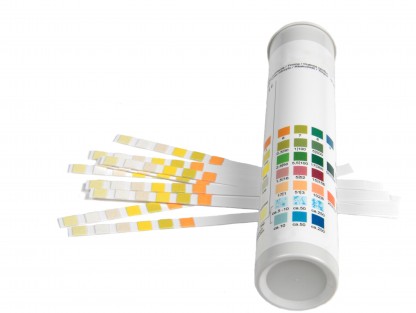Are You Too Acidic? Why Normal Body pH Is Important
As the human diet has changed over time, we have developed an increasing number of diet-related health concerns. But one of the lesser-known consequences of eating more saturated fats, simple sugars, sodium, and chloride, while eating less magnesium and potassium, is that our bodies are actually becoming more acidic. That’s significant—and concerning—because when normal body pH is altered, it can disrupt the function of the proteins and cells of our bodies, causing illness.[1]
Diet can affect the acid-base balance
Food choices can significantly affect the balance of acid and base in our bodies.[2] Fruits and vegetables raise pH, which promotes alkalinity. Conversely, grains, meat, and dairy lower pH and lead to acidity.[3] A higher pH means more alkaline, while a lower pH means more acidic.
A study in the British Journal of Nutrition concludes that: “The available research makes a compelling case that diet-induced acidosis is a real phenomenon, has significant clinical relevance, may largely be prevented through dietary changes, and should be recognized and treated.”[4] Although more substantial clinical studies are required to determine the complete validity of these claims, the health benefits linked to an alkaline diet include better bone health, reduced muscle wasting, lowered hypertension, and improved kidney health.[3] Researchers suggest that an alkaline diet might help these conditions by adjusting the ratio of potassium to sodium consumed, increasing growth hormone levels, and increasing intracellular magnesium.[3]
 Do you need an alkaline diet?
Do you need an alkaline diet?
To determine is an alkaline diet may benefit you, you can easily test your own pH level at home. Test strips of litmus paper are available at drug stores or health food stores. For most accurate results, test your urine a few times throughout the day over a series of a few days. The pH of your urine should increase throughout the day, becoming more alkaline. Optimal pH levels of urine are between 6.5 and 7. Anything less than 6 may mean that the body is overloaded with acid and treating this imbalance with an alkaline diet may be beneficial.
How to follow an alkaline diet
Most proponents of the alkaline diet do not suggest eating only fruits and vegetables. In fact, a good rule to follow is 80% alkaline foods and 20% acidic foods. This means the majority of your diet should be comprised of fruits and vegetables, with a less amount of seeds, lentils, and nuts. Only 20% of your food intake should be made up of proteins, grains, and dairy.
Supplementation with potassium and magnesium can also help return the acid-base balance back to normal (slightly alkaline) levels.[5] Michelle Schoffro Cook, MSc, PhD, RNCP, ROHP, suggests 400 to 800 mg of magnesium for supplementation. For potassium, the FDA recommends a total daily intake from food and supplements of about 4,700 mg. When taking an alkaline mineral supplement, make sure it is in the citrate or bicarbonate solution, which helps to buffer acid.
Finally, one of the easiest ways to become more alkaline is to drink plenty of water, which should be neutral with a pH of 7. This will naturally help to balance your pH.
Try these steps and monitor your pH until you are back in a normal range. You can then add some acid-forming foods back into your diet and carefully monitor their effects to determine your optimal dietary intake.
Share your experience
Have you ever tried an alkaline diet? What were your results? Have you ever tested your pH and found you were outside the normal body pH range? Let us know in the comments section below.


 Do you need an alkaline diet?
Do you need an alkaline diet?  Ask the EN Experts March 2025
Ask the EN Experts March 2025  Vegan Diet Better Than Omnivore Diet for Cardiovascular Health
Vegan Diet Better Than Omnivore Diet for Cardiovascular Health 